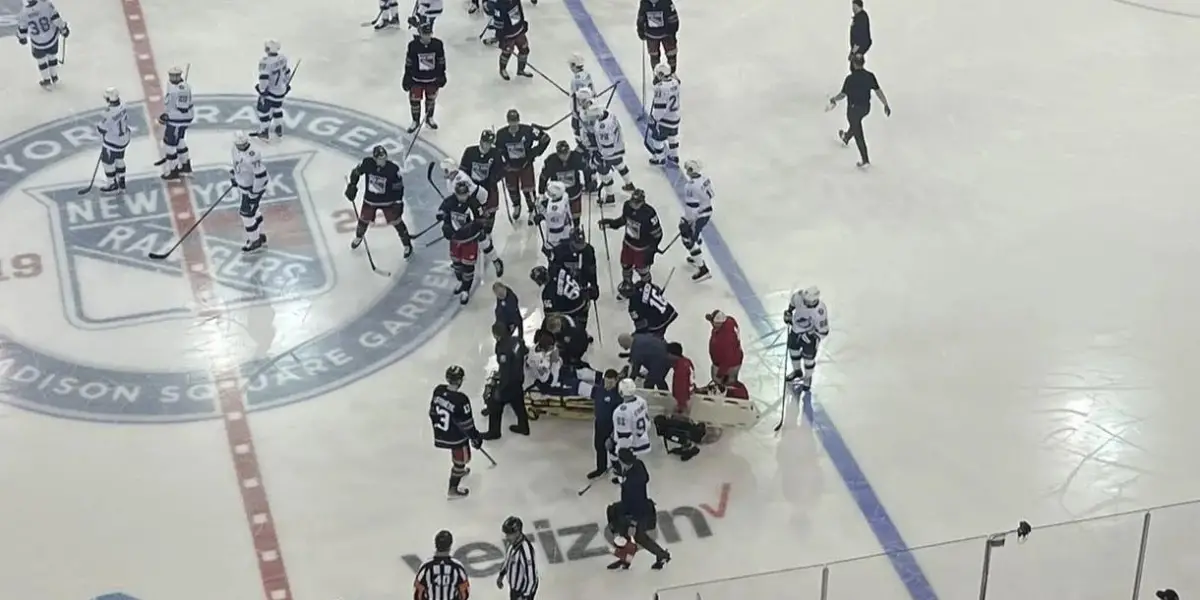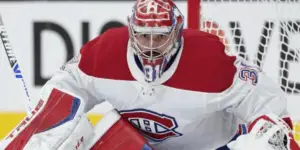
“You could hear a pin drop in this place,” said Ed Olczyk on the TNT broadcast. “This place” was Madison Square Garden, an arena known for anything but silence. It was true though, the place was silent. On the ice lay Mikhail Sergachev after an awkward fall on an otherwise ordinary play. From the moment it happened, everyone on the ice, in the stands, and watching the broadcast could tell it was not good. And for Sergachev, just back from a 17-game absence, it was brutal. He would eventually be carted off the ice on a stretcher, wiping the tears of pain and disappointment from his eyes with a towel.
As Sergachev was wheeled off, several things happened that epitomized the best of hockey culture. Stick taps from the players on both sides. A polite, but emphatic and extended round of applause from the entirety of Madison Square Garden. And a word or two from the other player involved, a stricken-looking Alexis Lafreniere, perhaps an apology for an accident. Finally, a wave and thumbs up from Sergachev, thanking the crowd for their support.
Later, Sergachev posted an honest, gut-wrenching Instagram post sharing his feelings on the injury with a sincerity and level of emotion often missing from professional athlete’s public communications. It was a messy and unfortunate situation, but it also reveals the true hockey culture that too often gets overshadowed by the ugly side of hockey culture.
In hockey, players play fast and tough in a sport that is part ballet and part gladiatorial grudge match. Fans root obsessively for their team and loudly against the others. But when an event like the injury to Sergachev occurs, we remember or are forced to remember, that it is just a game. The greatest of games, perhaps, but a game nonetheless. Played by men and women who love it, for entertainment (theirs and ours), competition, comradery, and hundreds of other reasons. When a crowd, and players, and announcers collectively display the best of hockey culture, it is possible to believe that this can be the true legacy of the game. Competition, compassion, perspective and, most importantly, humanity.
There is a choice to be made. The powers that be in hockey, through their actions, have the power to guide the game’s direction. They can continue to suppress investigations into abhorrent behavior and refuse to punish teams for their role in supporting this behavior or allowing it to thrive in their facilities, coaches, and players. Or they can continually remind, coach or even cajole players and organizations into teaching the part of the game’s culture that was on display Wednesday night in New York until it is the dominant hockey culture.
The responsibility is not solely on those who guide the professional segment of the sport, however. It rests with every youth coach, parent, beer league hero, and everyone else who loves the game of hockey. The culture of the game is in our collective hands. What do we want it to be? There is so much to love about this game at every level. If we are not careful, it can get away from us. On Wednesday night, the best of it was on display. What happens next is up to all of us.
Discover more from Inside The Rink
Subscribe to get the latest posts sent to your email.



